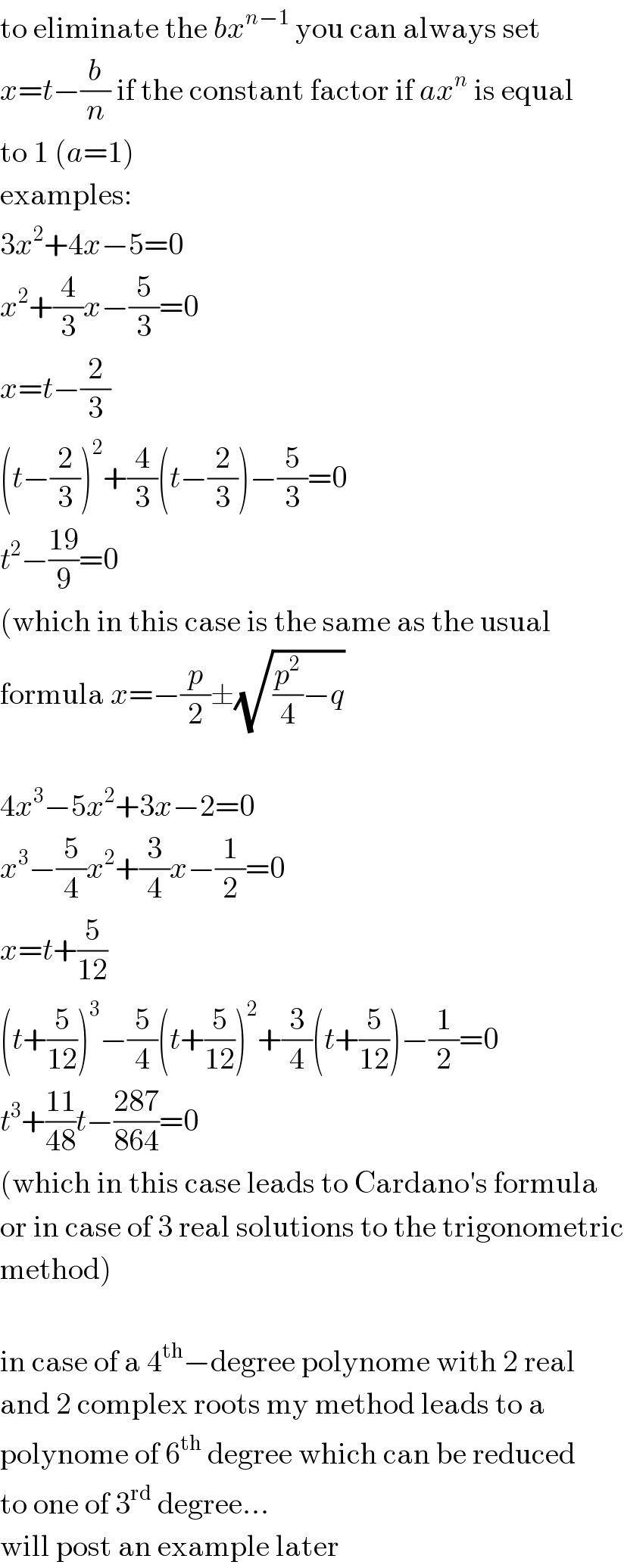
Question and Answers Forum
Question Number 41606 by psyche-ace last updated on 10/Aug/18

Answered by MJS last updated on 10/Aug/18

Commented by MJS last updated on 10/Aug/18

Commented by Tawa1 last updated on 10/Aug/18

Commented by Tawa1 last updated on 10/Aug/18

Commented by Tawa1 last updated on 10/Aug/18

Commented by Tawa1 last updated on 10/Aug/18

Commented by Tawa1 last updated on 11/Aug/18

Answered by tanmay.chaudhury50@gmail.com last updated on 10/Aug/18
![4x^2 (x^2 +4x+4)+8x^2 −9x−1=0 {(2x)(x+2)}^2 +9x^2 −6x+1−x^2 −3x−2=0 {(2x)(x+2)}^2 +(3x−1)^2 −(x^2 +3x+2)=0 {(2x)(x+2)}^2 +(3x−1)^2 −{x^2 +2.x.(3/2)+(9/4)+2−(9/4)}=0 {(2x)(x+2)}^2 +(3x−1)^2 −{(x+(3/2))^2 −(1/4)}=0 [{(2x)(x+2)}^2 +(3x−1)^2 +(1/4)]−[(x+(3/2))^2 ]=0 now i want to say some thing the value of [{(2x)(x+2)}^2 +(3x−1)^2 +(1/4)] is +ve and say its value is p now the value of [(x+(3/2))^2 ] is also positve and say value is q now the eqn is p−q=0 that imply the value of p should be equal to q to make the equation true but {(2x)(x+2)}^2 >[(x+(3/2))^2 ] so to me p can not be equal to q to make the equation true.. to me p>>q so i think this equation is not feasible...](Q41615.png)
Commented by Tawa1 last updated on 10/Aug/18

